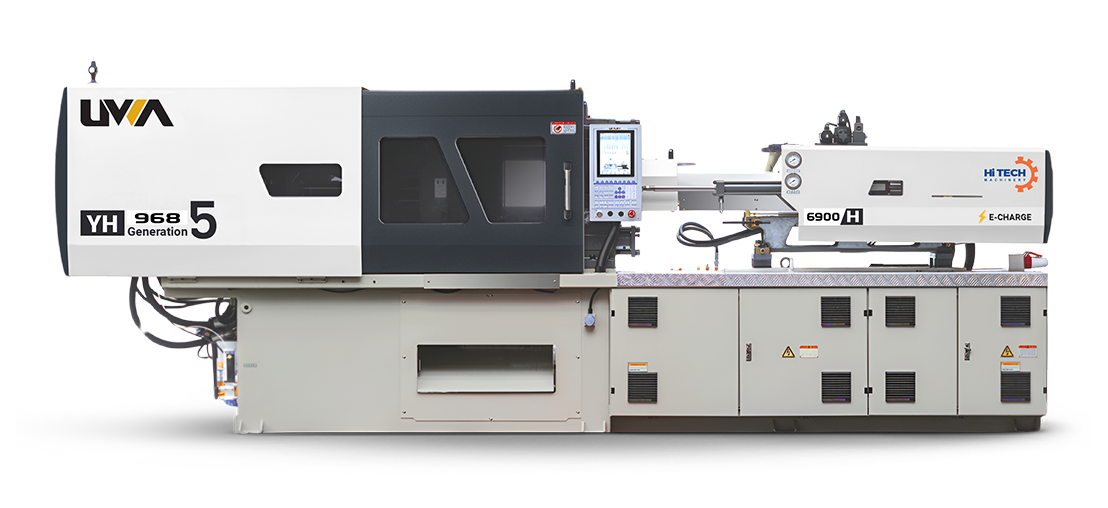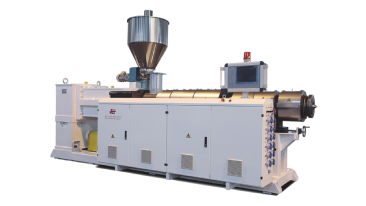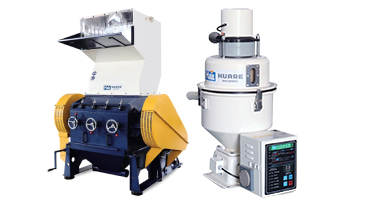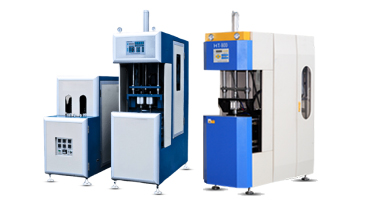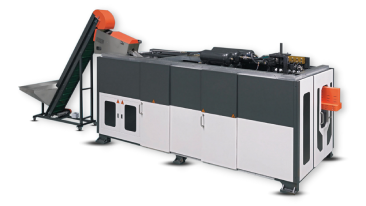Packaging is one of the fastest-growing segments of plastic-use products. Whether it’s for food delivery, fruits and vegetables, or general takeaway, disposable packaging is normally plastic.
Thin-wall food containers are one of the established, evergreen segments in that niche, with consumers across almost every food category using them daily.
This blog is all about starting a thin-wall food container manufacturing business. We’ll explain what setup is required, what the investment looks like, and what kind of returns you can expect.
What is a Thin-Wall Container?
Normally, regular-use rigid plastic containers are also available everywhere. But they are not considered thin-wall containers.
A thin-wall container is a specialized type of container with a very thin wall thickness, ranging from less than 0.5 mm to around 0.8 mm. This makes it very lightweight compared to standard containers.
It’s usually transparent, and its main purpose is disposable food packaging. However, just like we often reuse PET bottles at home, many households also end up reusing these thin-wall containers for storage, leftovers, or small kitchen items.
Types of Thin-Wall Containers

If we talk about thin-wall containers, we see them in different shapes and styles, mostly based on the volume. On that basis, you’ll find:
- Round ones: Common for yogurt cups, deli tubs, and small sauce containers.
- Rectangular/square ones: Used a lot for meal prep, bakery items, take-outs, or ready-to-heat food.
Other than that, thin-wall containers usually come in standard volumes, such as 250 ml, 500 ml, 750 ml, 1000 ml, 1500 ml, 2000 ml, and 3000 ml, depending on the product they’re intended to pack.
In the local market, some people may specify weights (like saying the container can carry certain kilograms of food), but that’s actually not the correct way to describe it, because a packaging container is supposed to be rated by volume, not weight.
Market Size of Thin-Wall Containers
According to Future Market Insights, the global market of thin-wall containers stood at around USD 37–38 billion, with Asia, especially India and China, leading the demand. Naturally, higher population, rising food consumption, and rapid growth in takeaways and packaged meals push this segment forward.
Furthermore, with more focus on sustainability and proper food packaging, thin-wall containers are becoming even more relevant. Since they are lightweight and made from recyclable plastic, they require less energy to produce and have a relatively lower environmental impact. Their stackable nature also makes them easy to transport, reducing logistics costs.
When we talk about the local market, it’s largely undocumented. But if one has to gauge it, you can simply look at the size of the food market, especially the part that deals with takeaways, deliveries, bakeries, and ready-to-eat meals, and then estimate based on the number of containers these businesses use daily.
Currently, in many markets, including Pakistan, there are already established players manufacturing thin-wall containers and earning good profits, which clearly shows that the business is viable. However, the demand gap is still not fully covered, so there’s plenty of room for new entrants to start and grow in this segment.
Set Up Required for Thin-Wall Containers
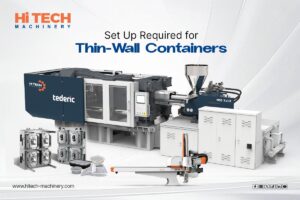
If we talk about the setup, it is flexible and really depends on how versatile a product range you want to start with. You can begin with just a couple of container sizes and then scale up because each mold will have its own cost.
Typically, a thin-wall setup requires:
- Injection Molding Machines: We recommend at least two machines, one for the container and one for the lid. These need to be high-speed machines. At Hitech Machinery, the UWA YHSP Series and the Tederic NEO T work well for this purpose.
- Molds: This depends on what sizes you plan to make. You can have molds for 250 ml, 500 ml, and even larger sizes up to 3000 ml.
- Autoloader: To feed raw material automatically into the machine.
- 3-Axis Take-Out Robot: For picking and stacking the containers efficiently.
- Air Compressor: To supply compressed air for pneumatic machine operations and the robot.
- Conveyor: Carries finished products from the machine to the packing area.
- Chiller: Cools mold, which is very important in thin-wall production due to fast cycle times.
- Crusher: For recycling rejected pieces or leftover material back into usable regrind.
Production and Setup Estimates
Production will vary based on the size of the containers being made and the number of mold cavities. Below is a production estimate for different container sizes in the table:
| Name of Commodity & Specification | Cycle Time | Mold Cavity | Production Per Hour | Production Per Day (16 hr.) |
| Thin Wall Rectangular Box 500ml Mold | 5–6s | 8 | 4800 – 5760 | 76800 – 92160 |
| Thin Wall Rectangular Box 750ml Mold | 5–6s | 8 | 4800 – 5760 | 76800 – 92160 |
| Thin Wall Rectangular Box 1000ml Mold | 6–7s | 6 | 3086 – 3600 | 49371 – 57600 |
| Thin Wall Rectangular Lid 500/750/1000ml Mold | 5–6s | 8 | 4800 – 5760 | 76800 – 92160 |
| Thin Wall Square Box 1500ml Mold | 6–7s | 4 | 2057 – 2400 | 32914 – 38400 |
| Thin Wall Square Lid 1500ml Mold | 5–6s | 4 | 2400 – 2880 | 38400 – 46080 |
| Thin Wall Square Box 2000ml Mold | 6–7s | 2 | 1029 – 1200 | 16457 – 19200 |
| Thin Wall Square Box 3000ml Mold | 6–7s | 2 | 1029 – 1200 | 16457 – 19200 |
| Thin Wall Square Lid 2000/3000ml Mold | 6–7s | 4 | 2057 – 2400 | 32914 – 38400 |
| Thin Wall Round Box 10oz Mold | 5–6s | 9 | 5400 – 6480 | 86400 – 103680 |
| Thin Wall Round Box 16oz Mold | 6–7s | 8 | 4114 – 4800 | 65829 – 76800 |
| Thin Wall Round Lid 10oz & 16oz Mold | 5–6s | 9 | 5400 – 6480 | 86400 – 103680 |
If we talk about the setup cost, with two high-speed injection molding machines, all auxiliaries, and the molds we listed, it’s around $615,000. And ROI for such a setup could be achieved between 1.25 to 2 years.
How You Can Thin Wall Container Business with HiTech Machinery
If you want to set up a thin-wall food container manufacturing business, HiTech Machinery can help you with end-to-end support. From procuring the machines, auxiliaries, and molds to installing, testing, and running the production line, we guide you at every step.
Besides that, we also offer after-sales support services, including local warranty, maintenance, spare parts, and any repairs that may be required during production.
Contact HiTech Machinery to get a custom solution for thin-wall container manufacturing or any other packaging product needs.

